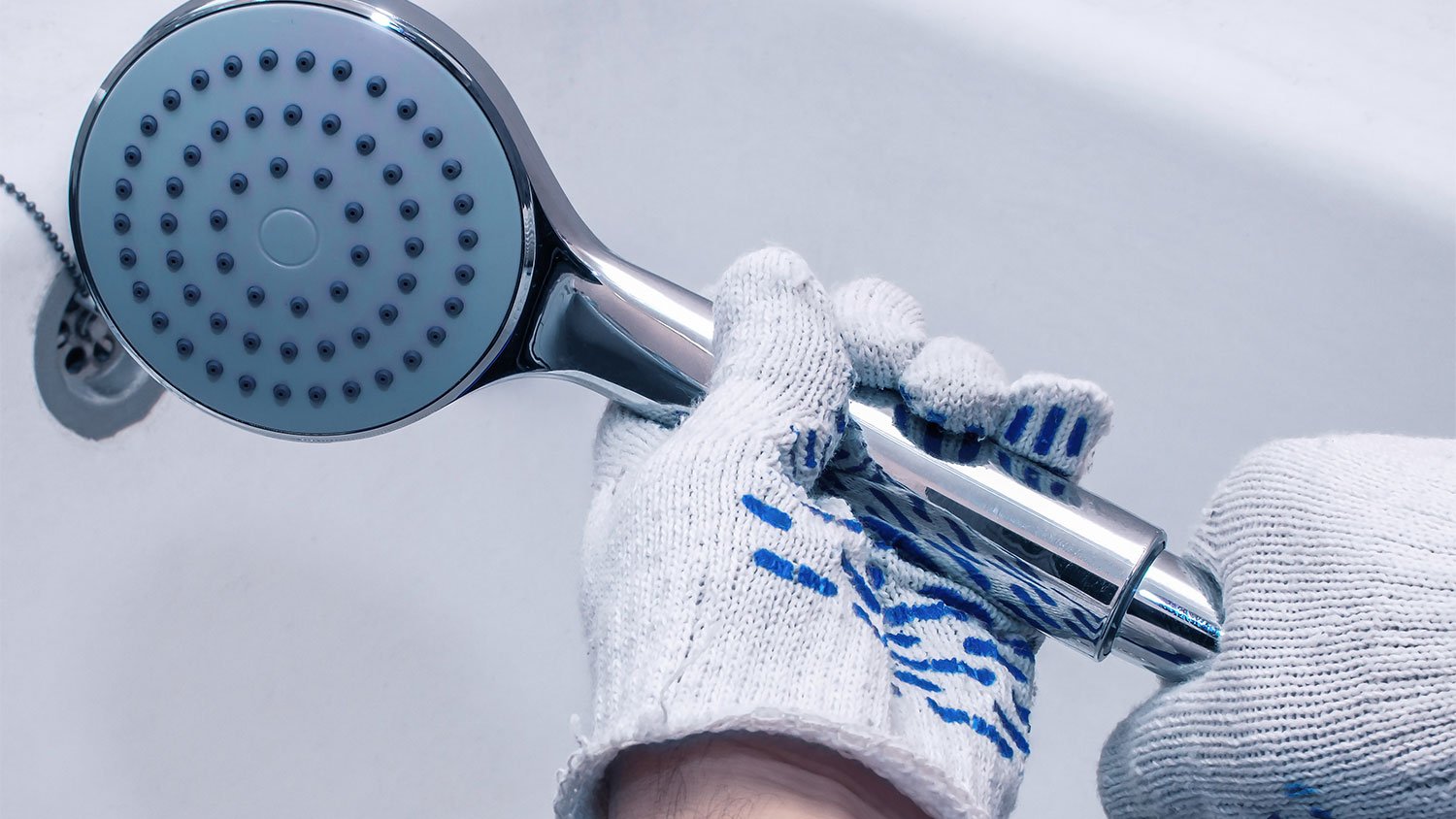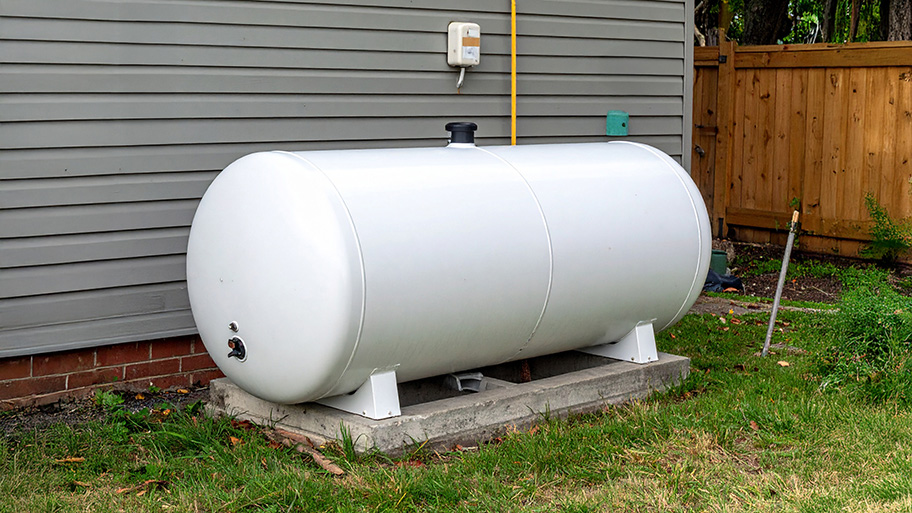
A main water shut-off valve controls water flow for your entire home. Here we break down the cost to replace a main water shut-off valve.
Out with the old, in with the new


While replacing a showerhead costs around $50 to $100 for labor, a pro will install everything correctly to prevent low water pressure or water leaks.
A faucet installation pro will come with all the tools and supplies needed, including plumber’s tape, an adjustable wrench, and slip-joint pliers.
Hire a pro if you’re planning to switch from a standard wall, hand-held, or combo showerhead to a rainfall showerhead that attaches to the ceiling.
Whether you are doing a big bathroom remodel or you just want to put a personal touch on a rental bathroom, a new showerhead is an easy upgrade to consider. Learning how to change a showerhead is simple, even for novice DIYers. When you are ready to refresh your bathroom, you will enjoy better water pressure, advanced features, and a more stylish option. Here is how to swap out a showerhead for a new and improved look.
The first thing you should do is choose the best showerhead for your needs. You might go with a traditional fixed or handheld showerhead or something more luxurious like a rain or combination showerhead. Buy one that will work for the water pressure in your bathroom, and consider low-flow options for reducing water usage.
Once you have the new showerhead, gather all of the tools you will need. Get a wrench, a toothbrush, cloth, seal tape, and screwdriver.
Before putting in the new showerhead, you have to remove the old one.
Turn the showerhead counterclockwise. If it feels stuck, use an adjustable wrench to unscrew the old showerhead.
Remove any existing plumber’s tape on the shower arm. Use a toothbrush and a damp cloth to clean the arm threads, which is where the new head will attach. Wipe the threads dry.
Wrap the shower arm threads with seal tape. This ensures a tight, waterproof seal around the arm threads to prevent leaks after you attach the new showerhead.

To change a showerhead, you will need to know how to remove the old showerhead. Then, depending on the type of new showerhead, there are different steps to take for a secure installation.

Some showers have retractable heads that you can maneuver while washing up, but a fixed showerhead stays on the wall. While they offer less adjustability, a fixed showerhead is the easiest to install.
Screw the showerhead onto the shower arm, over the taped threads.
Turn on water to test for leaks.
If you notice leaking, add more seal tape and tighten the showerhead with a wrench.
Test again to check for leaks. If you still experience leaking, you may want to call in a plumber to take a look.

A handheld showerhead rests on a mount. You can pick it up and move it, thanks to a long, flexible arm. Handheld showerheads are also simple to install, but there is an extra step to connect the showerhead to its mount.
Screw the showerhead onto the shower arm.
Attach the flexible hose. It should connect in two places—the shower arm, which it will screw onto clockwise, and its mount. Consult the product manual for specific instructions.
Once the connections are tightened by hand or with a wrench, place the showerhead onto the mount.
Turn on water and test for leaks.
Add more seal tape and tighten the connections again if the showerhead leaks.

For the best of both worlds, consider a combination showerhead. These feature both a fixed head and a handheld showerhead—also called the arm—that rests on a mount.
Connect the diverter to the shower arm. The diverter allows the water flow to switch between the head and arm, depending on which you want to use.
Next, connect the fixed showerhead to the diverter. Move in a clockwise direction. You can tighten the connection by hand rather than with a wrench.
Connect the shower arm to its mount.
Attach the shower hose to the handheld shower arm and mount.
Turn on the water and test the diverter. Check for leaks.
If there are leaks, tighten the connections and test again.
The cost to install a new showerhead is $75 to $150, although it may be higher if you splurge on a more expensive one. You can find many showerheads for $15 to $50 at hardware stores or online. You may also need to buy a few tools and supplies, including plumber’s tape, an adjustable wrench, and slip-joint pliers, if you do not already have them.
Hiring a plumber to install a new showerhead costs about $50 to $100 for labor, plus the cost of the showerhead. While DIYing can save you money, hiring a pro can give you peace of mind that the showerhead was installed correctly and will not lead to leaks or poor water pressure. It is also best to hire a pro if you are planning to switch from a standard wall, hand-held, or combo showerhead to a rainfall showerhead that attaches to the ceiling.
Paige Bennett contributed to this piece.
From average costs to expert advice, get all the answers you need to get your job done.

A main water shut-off valve controls water flow for your entire home. Here we break down the cost to replace a main water shut-off valve.

Emergency plumbers cost between 1.5 and 3 times as much as a typical plumber. Get specifics for your plumbing issue and city in our guide.

The average propane tank costs between $600 and $2,500, depending on the size, location, and more. Our expert guide explores all the factors.

Copper is prone to leaks from corrosion, particularly pinhole leaks. This guide will show you how to fix a copper pipe leak in seven different ways.

Discover grey water system cost details to learn about installation, maintenance, and ways to save on your home’s grey water system.

There are a few plumbing terms that everyone needs to know. Using this informative guide, you’ll learn plumbing terms like flapper and shut-off valve to help you tackle both emergencies and everyday annoyances.